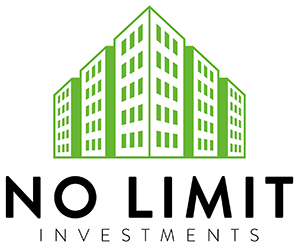What Does Return on Investment (ROI) Really Mean for Investors?
Return on Investment (ROI) is one of the most important measures of financial success. Simply put, ROI calculates how much profit you earn compared to the amount of money you put into an investment. This percentage helps investors understand whether their money is working efficiently.
For example, if you invest $10,000 and later sell your investment for $12,000, your ROI is 20%. In real estate, ROI can reflect rental income, appreciation, or even tax benefits. In stocks, ROI is tied to dividends and capital gains. The higher the ROI, the stronger the investment opportunity.
But ROI is not just about numbers. It helps you compare different opportunities side by side. By understanding ROI, investors can better judge whether to pursue short-term gains or long-term stability (U.S. Securities and Exchange Commission).
Why Is Market Research the First Step in Spotting Investment Opportunities?
Market research acts as the foundation for evaluating investment opportunities. Without clear research, investors often rely on guesswork, which can lead to losses. Market research includes:
- Economic Trends: Examining interest rates, inflation, and employment figures to understand broader conditions (Federal Reserve).
- Local Insights: Looking at neighborhood data for real estate or specific industry growth for business investments.
- Risk Assessment: Understanding potential threats like regulation changes, competition, or economic downturns.
The key question to ask is: Does this market show signs of growth and demand? Answering this can help you avoid costly mistakes and focus only on high-potential opportunities.
How Do You Evaluate Risk Versus Reward in an Investment?
Every opportunity carries both upside potential and downside risk. Balancing these factors helps you protect your capital while still pursuing growth. Investors should:
- Measure Volatility: Stocks, for example, often fluctuate more than real estate, which can mean higher risk but also faster gains.
- Consider Liquidity: Can you sell quickly if needed, or is your money tied up for years?
- Weigh Predictability: Some assets, such as bonds or established rental properties, are more stable compared to speculative start-ups.
One helpful rule is the “risk-reward ratio,” which measures how much risk you are taking compared to the potential profit. If the downside risk outweighs the upside potential, the opportunity may not be worth pursuing (Harvard Business Review).
What Role Do Financial Metrics Play in Identifying Opportunities?
Metrics are the language of smart investing. Beyond ROI, other calculations reveal whether an opportunity is truly worth the commitment:
- Net Present Value (NPV): Determines if future profits outweigh the initial costs.
- Internal Rate of Return (IRR): Estimates the annual growth rate of an investment.
- Debt-Service Coverage Ratio (DSCR): Evaluates whether rental income can cover mortgage payments in real estate.
- Loan-to-Value Ratio (LTV): Compares the loan amount to property value, an essential metric for lenders and investors alike.
The right financing tool supports these numbers. For example, DSCR loans are specifically designed to qualify a property based on its rental income rather than personal income. This is especially valuable for investors looking to expand their portfolios without relying on traditional income verification.
Why Is Diversification Key When Looking for High ROI Potential?
Putting all your money into a single investment may feel bold, but it also exposes you to unnecessary risk. Diversification spreads risk across multiple investments, increasing your chances of steady returns.
- Asset Diversification: Real estate, stocks, bonds, and private lending.
- Geographic Diversification: Investing in different cities or countries.
- Strategy Diversification: Balancing short-term flips with long-term buy-and-hold strategies.
Real estate financing programs such as fix & flip loans for short-term projects and buy & hold mortgages for long-term rentals make it easier to diversify strategies. By using both, an investor balances quick profits with steady passive income.
How Can Emerging Markets Reveal Hidden Investment Opportunities?
Emerging markets often present the strongest ROI potential because they combine affordability with growth trends. In real estate, this might mean cities experiencing population increases, new job opportunities, or infrastructure projects.
For example:
- Affordable Entry: Buying into a market before it peaks allows for stronger appreciation.
- High Demand Growth: Areas with rising populations or new industries see higher rental demand.
- Government Incentives: Some regions provide tax breaks or grants to attract investors.
Financing options like new construction loans allow investors to build in these emerging markets, while BRRRR financing (Buy, Rehab, Rent, Refinance, Repeat) gives them a repeatable model for scaling quickly.
What Tools and Resources Can Help Investors Spot Opportunities Faster?
Technology has made opportunity-spotting easier than ever. Investors now rely on a mix of free and paid tools:
- Government Databases: Census Bureau data shows population trends, while HUD reports highlight housing demand.
- Online Platforms: Real estate and stock screeners help filter investments by ROI, price, and growth potential.
- Professional Guidance: Working with advisors, brokers, or investment platforms can streamline the search process.
Using tools alone is valuable, but pairing them with specialized funding options like cash-out refinance, which taps into existing equity to fuel new deals, can dramatically speed up portfolio growth.
Why Should You Partner With Professionals to Maximize ROI?
While independent research is powerful, professional guidance often makes the difference between average and exceptional results. Experienced advisors can help investors:
- Secure Funding: Access tailored loans and financing options.
- Analyze Metrics: Break down complex numbers into clear strategies.
- Streamline Deals: Handle paperwork, negotiations, and compliance.
This is where services like No Limit Investments play a crucial role. They provide comprehensive real estate financing solutions from fix & flip loans to BRRRR financing, that help investors match their strategies with the right funding.
What Is the Next Step for Investors Ready to Act?

If you are ready to move beyond theory and actually pursue profitable opportunities, the next step is connecting with experts who can guide your journey. At No Limit Investments, investors gain access to:
- Fix & flip loans for quick projects.
- Buy & hold mortgages for long-term rental income.
- BRRRR financing to build scalable portfolios.
- Cash-out refinance to unlock equity.
- DSCR loans for income-based qualification.
- New construction loans to fund development projects.
By offering complete real estate financing solutions, they ensure that no matter your strategy, you have the funding to pursue it.
Taking action today ensures you don’t just dream about wealth, you build it.
Final Thoughts
Spotting high-ROI investment opportunities requires clarity, research, and a willingness to act. From understanding ROI and evaluating risks to exploring emerging markets and using financial metrics, investors must combine knowledge with strategy. Diversification and professional guidance further strengthen your chances of success.
The most successful investors are those who prepare, analyze, and then act with confidence. By following these steps and by partnering with trusted resources like No Limit Investments, you position yourself to build a stronger, more profitable financial future.
Works Cited
- Federal Reserve. Economic Research and Data. Board of Governors of the Federal Reserve System, 2024. www.federalreserve.gov/data.htm.
- Harvard Business Review. “Managing Risk in an Unstable World.” Harvard Business Review, vol. 80, no. 6, 2023, pp. 51-60.
- U.S. Census Bureau. Population and Housing Data. United States Department of Commerce, 2024. www.census.gov.
- U.S. Department of Housing and Urban Development (HUD). Housing Market Reports. 2024. www.hud.gov.
- U.S. Department of Labor. Why Diversify Investments? Employee Benefits Security Administration, 2024. www.dol.gov/agencies/ebsa.
- U.S. Securities and Exchange Commission. Beginners’ Guide to Financial Statements. 2023. www.sec.gov
Frequently Asked Questions (FAQs)
- What are the most common types of real estate financing solutions available to investors?
Investors can choose from several financing options depending on their goals. The most popular include fix & flip loans for short-term projects, buy & hold mortgages for long-term rentals, BRRRR financing for scalable portfolio growth, cash-out refinance to access equity, DSCR loans based on rental income, and new construction loans for development. Each one supports different strategies and risk levels.
- How do DSCR loans help real estate investors qualify for funding?
Debt-Service Coverage Ratio (DSCR) loans allow investors to qualify based on the rental income of a property rather than personal income or employment history. This is especially helpful for investors who own multiple properties or who may not meet traditional mortgage requirements but have strong-performing rental properties.
- When should an investor consider using a cash-out refinance?
A cash-out refinance is useful when an investor wants to tap into the equity of an existing property to fund new opportunities. This strategy works well for those looking to expand their portfolio without selling current assets, as it provides liquidity while maintaining ownership of the property.
- What makes BRRRR financing an effective strategy for scaling a portfolio?
BRRRR stands for Buy, Rehab, Rent, Refinance, and Repeat. This strategy allows investors to recycle their capital by purchasing undervalued properties, renovating them to increase value, renting them out for steady income, refinancing to pull out equity, and then repeating the process. Over time, this creates a scalable and repeatable model for long-term wealth.
- Why is working with a professional financing partner important for spotting investment opportunities?
Partnering with experts like No Limit Investments ensures investors gain access to tailored financing solutions, professional analysis of ROI, and guidance on structuring deals. Having the right financial tools not only strengthens the chances of securing high-ROI opportunities but also simplifies the process of building a profitable portfolio.







